-
Previous
Start of QZS-4 Trial Service

-
Next
Start of Sub-meter Level Augmentation Service (SLAS) Trial Service using QZS-2

Start of QZS-3 Trial Service
The third Quasi-Zenith Satellite (QZS-3) was launched on August 19, 2017.
After launch, the satellite test on orbit and the authorization work to confirm performance and compatibility with ground systems have been made. The authorization work has been completed, and trial services started on December 18, 2017 for the following services.
- Satellite Positioning, Navigation and Timing Service (PNT)
- Sub-meter Level Augmentation Service (SLAS)
- Centi-meter Level Augmentation Service (CLAS)
The trial services will offer services with the same performance as the operation starting in FY2018.The details are shown on this website's User Interface Specifications page.
Centi-meter Level Augmentation information trial service starts to broadcast augmentation information for the following GNSS signals shown on this website's Performance Standard (PS-QZSS), 6.1 clause.
QZSS: L1C/A, L2C
GPS: L1C/A, L2P
About Centi-meter Level Augmentation information using other signals, it is planned to be broadcast after the confirmation is completed about CLAS performance depending on GNSS constellation status and the correspondence to GNSS of GEONET. Notice will be posted on this website about the start date of that service and other issues.
Information about provided services
Information about provided services is available on this website’s Operational status / NAQU information page.
NAQU information is provided via Twitter. To view this information, please follow @QZSS_Status on Twitter. (Twitter user top page: https://twitter.com/QZSS_Status)
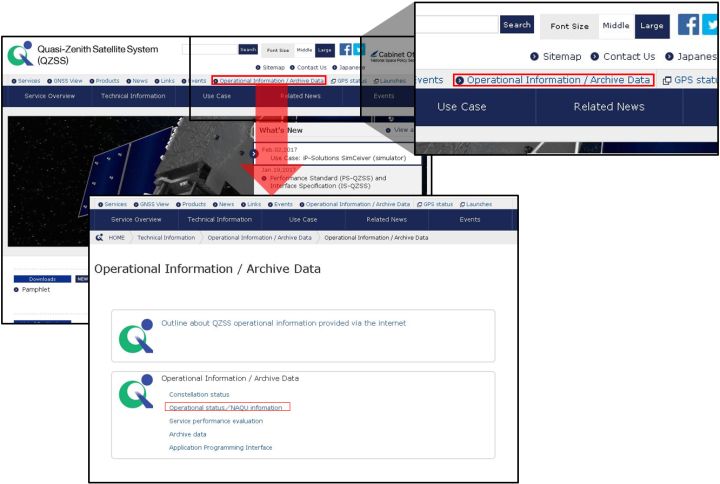
Borrowing receivers for application demonstration
While the trial services are available, application demonstrations can be conducted freely using QZS. Receivers for application demonstration can be borrowed at no charge. If you would like to borrow a receiver, please read the information on the Application Demonstration page and then apply.
Receivers cannot be directly loaned to people outside of Japan. However, a corporation in Japan may borrow a receiver and use it in other countries at its own cost and responsibility.
-
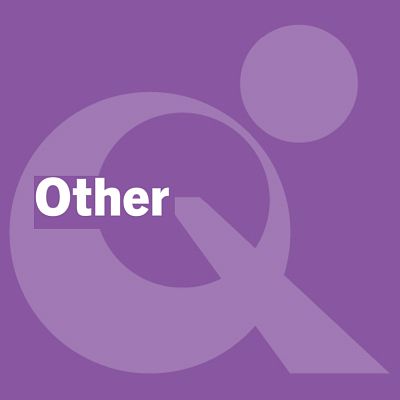 Oct.02,2025
Oct.02,2025Start of QZS-6 SBAS Transmisson Service
-
 Sep.25,2025
Sep.25,2025Update the User Interface Specification (IS-QZSS-DCR) for the DC Report Service.
-
 Aug.28,2025
Aug.28,2025CLAS: Maximum Number of Augmented Satellites Started to Increase in Accordance with IS-QZSS-L6-007
-
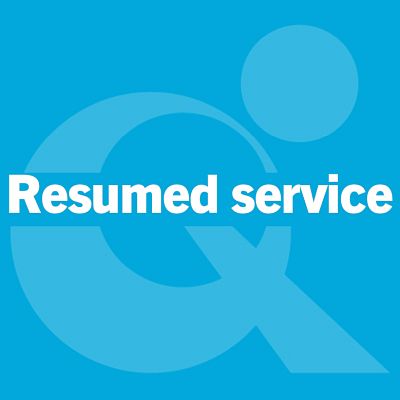 Aug.20,2025
Aug.20,2025Announcement of the operation mode switch for the PTV signal (L5S) on QZS-1R
-
 Aug.19,2025
Aug.19,2025Update of Performance Standard (PS-QZSS)
-
 Aug.10,2025
Aug.10,2025Announcement of the signal switching for PNT service on QZS-1R
-
 Aug.05,2025
Aug.05,2025Update the User Interface Specification (IS-QZSS-L6) for CLAS
-
 Jul.28,2025
Jul.28,2025Regarding the Health "BAD" settings in PNT services
-
 Jul.22,2025
Jul.22,2025Validation of the CLAS service upgrade to increase the number of augmented satellites.
-
 Jul.18,2025
Jul.18,2025Start of QZS-6 Services
-
 Jul.08,2025
Jul.08,2025Start of the message distribution with improved number of augmented signals and satellites in MADOCA-PPP
-
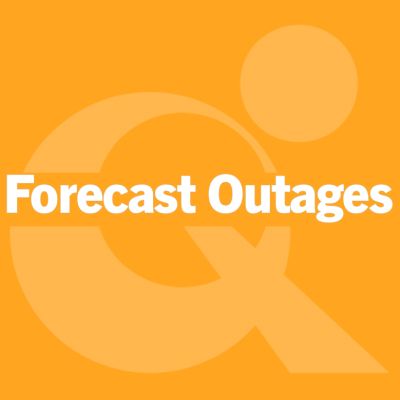 Jul.25,2025
Jul.25,2025Announcement of the signal switching for PNT service on QZS-1R (Partially revised on July 25, 2025)
-
 Jul.02,2025
Jul.02,2025Schedule for the start of the message distribution with improved number of augmented signals and satellites in MADOCA-PPP
-
 Jul.01,2025
Jul.01,2025Announcement of the operation mode switch for the PTV signal (L5S) on QZS-1R
-
 Jun.25,2025
Jun.25,2025L1C/B support of Multi-GNSS Integrated Real time and Archived Information system (MIRAI)
-
 Jun.13,2025
Jun.13,2025Update the User Interface Specification (IS-QZSS-L6) for CLAS and CLAS test library, CLASLIB, and the Test Transmission from QZS-3
-
 Jun.10,2025
Jun.10,2025Start of QZS-6 Services
-
 Jun.02,2025
Jun.02,2025Delay of the transition to the Health "BAD" status in PNT services
-
 May.28,2025
May.28,2025Plan for support of multi-frequency positioning in MADOCA-PPP and request for support of MADOCALIB v2.0
-
 May.21,2025
May.21,2025Preparation Status of QZS-6
-
 May.08,2025
May.08,2025Update the User Interface Specification for the SLAS and the DC Report Service
-
 Apr.01,2025
Apr.01,2025Update the User Interface Specification for the DC Report Service (Extended Information)
-
 Feb.21,2025
Feb.21,2025Scheduled Outage of SBAS signal in the SBAS Transmission Service
-
 Feb.14,2025
Feb.14,2025Release of CLAS test library, CLASLIB v0.8.0
-
 Feb.05,2025
Feb.05,2025Release of reference service performance evaluation of MADOCA-PPP Wide-area Ionospheric Correction Information
-
 Jan.22,2025
Jan.22,2025Update the User Interface Specification for CLAS
-
 Dec.05,2024
Dec.05,2024Update the User Interface Specification (IS-QZSS-DCX) for the DC Report Service (Extended Information)
-
 Dec.02,2024
Dec.02,2024Release of MADOCA-PPP test library, MADOCALIB v1.4
-
 Dec.02,2024
Dec.02,2024Update of the coverage areas of ionospheric correction data for the Internet distribution of MADOCA-PPP
-
 Oct.23,2024
Oct.23,2024Scheduled Outage of SBAS signal in the SBAS Transmission Service
-
 Oct.22,2024
Oct.22,2024Update of Performance Standard (PS-QZSS)
-
 Sep.18,2024
Sep.18,2024Scheduled Outage of SBAS signal in the SBAS Transmission Service
-
 Sep.13,2024
Sep.13,2024Release of MADOCA-PPP test library, MADOCALIB v1.3
-
 Sep.13,2024
Sep.13,2024Update the User Interface Specification (IS-QZSS-SAS) for QZNMA
-
 Sep.03,2024
Sep.03,2024Update the User Interface Specification (IS-QZSS-MDC) for MADOCA-PPP
-
 Jul.12,2024
Jul.12,2024Update the User Interface Specification (IS-QZSS-PNT-006) for the PNT
-
 Jul.01,2024
Jul.01,2024Start of the Internet distribution of MADOCA-PPP and release of MADOCALIB v1.2
-
 Jun.19,2024
Jun.19,2024Internet distribution of MADOCA-PPP
-
 Jun.03,2024
Jun.03,2024Update the User Interface Specification (IS-QZSS-DCR) for the DC Report Service
-
 Apr.01,2024
Apr.01,2024Operational service of MADOCA-PPP has now started
-
 Apr.01,2024
Apr.01,2024Start of DCX and adoption of Common Alert Message Format
-
 Apr.01,2024
Apr.01,2024Start of signal authentication service
-
 Feb.22,2024
Feb.22,2024The Test Transmission of signal authentication data (notice of close)
-
 Jan.10,2024
Jan.10,2024The Test Transmission of signal authentication data
-
 Dec.28,2023
Dec.28,2023Update the User Interface Specification (IS-QZSS-TV) for the PTV
-
 Dec.21,2023
Dec.21,2023The change of transmission pattern for navigation messages in PNT services
-
 Dec.18,2023
Dec.18,2023Schedule for changes in the transmission patterns of navigation messages for PNT services
-
 Dec.15,2023
Dec.15,2023The Test Transmission of signal authentication data (notice of suspension)
-
 Dec.07,2023
Dec.07,2023Upcoming Schedule for the Launch of Satellite Report for Disaster and Crisis Management (Extended Information)
-
 Nov.30,2023
Nov.30,2023Update the User Interface Specification (IS-QZSS-MDC) for MADOCA-PPP
-
 Nov.10,2023
Nov.10,2023Start of the application of the interface specification for PNT service of the 5th edition (IS-QZSS-PNT-005)
-
 Nov.09,2023
Nov.09,2023Implementation of the application work for the interface specification for PNT service of the 5th edition
-
 Oct.31,2023
Oct.31,2023Update the User Interface Specification (IS-QZSS-DCR) for the DC Report Service
-
 Oct.25,2023
Oct.25,2023Update the User Interface Specification (IS-QZSS-L1S) for the SLAS
-
 Sep.15,2023
Sep.15,2023Suspension of QZS-1 all operations
-
 Sep.01,2023
Sep.01,2023NAQU notification for MADOCA-PPP
-
 Aug.23,2023
Aug.23,2023Application of the interface specification for PNT service of the 5th edition (IS-QZSS-PNT-005)
-
 Jul.31,2023
Jul.31,2023The Test Transmission of signal authentication data has now started
-
 Jul.07,2023
Jul.07,2023The Test Transmission of signal authentication data
-
 Feb.17,2023
Feb.17,2023Update the User Interface Specification (IS-QZSS-L1S) for the SLAS
-
 Jan.24,2023
Jan.24,2023Release of the user interface specification (draft version) for signal authentication service
-
 Oct.25,2022
Oct.25,2022Update the interface specification of PNT service for 7-Satellites Constellation in advance
-
 Sep.30,2022
Sep.30,2022Trial service of MADOCA-PPP has now started
-
 Sep.22,2022
Sep.22,2022The Beginning of Trial Service of MADOCA-PPP (Switchover dates and related user interface specifications)
-
 Aug.01,2022
Aug.01,2022The Test Transmission of MADOCA-PPP
-
 Apr.01,2022
Apr.01,2022The GNSS Integrated Data Sharing System (MIRAI)
-
 Mar.25,2022
Mar.25,2022Suspension of QZS-1 signal transmission
-
 Mar.24,2022
Mar.24,2022Update the Performance Standard(PS-QZSS) for the start of QZS-1R services
-
 Mar.24,2022
Mar.24,2022Start of QZS-1R Services
-
 Mar.22,2022
Mar.22,2022Start of QZS-1R Services and Suspension of QZS-1 signal transmission
-
 Mar.18,2022
Mar.18,2022Update the Performance Standard (PS-QZSS) for the start of QZS-1R services
-
 Mar.14,2022
Mar.14,2022Start of QZS-1R Services and Suspension of QZS-1 signal transmission (Advance Notice)
-
 Feb.28,2022
Feb.28,2022Release of Specifications for MADOCA-PPP
-
 Feb.28,2022
Feb.28,2022Release of Service Performance Evaluation
-
 Jan.31,2022
Jan.31,2022Start of QZS-1R test signals transmission
-
 Jan.26,2022
Jan.26,2022Update the User Interface Specification (IS-QZSS-DCR) for the DC Report Service
-
 Nov.29,2021
Nov.29,2021Release of Service Performance Evaluation
-
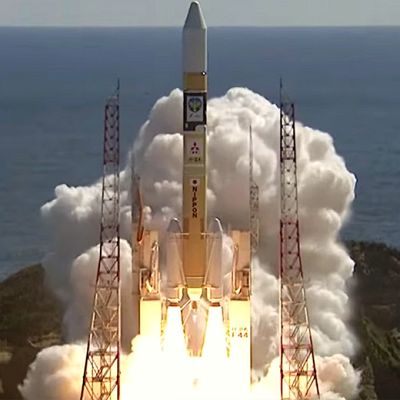 Oct.26,2021
Oct.26,2021Launch Result of the H-IIA Launch Vehicle No. 44 which carries aboard the QZS-1R
-
 Jul.14,2021
Jul.14,2021Update of the compliant coordinate system and User Interface Specification for CLAS
-
 Apr.23,2021
Apr.23,2021Reassignment of QZSS L5S PRN number completed and application of the IS-QZSS-TV-003 for the PTV started
-
 Apr.14,2021
Apr.14,2021Reassignment of QZSS L5S PRN number and application of the IS-QZSS-TV-003 for the PTV
-
 Mar.09,2021
Mar.09,2021Trial transmission of the navigation message authentication
-
 Feb.15,2021
Feb.15,2021Complete the update of the PNT reference frame for alignment with ITRF2014
-
 Feb.01,2021
Feb.01,2021Update the User Interface Specification (IS-QZSS-PNT-004) for the PNT
-
 Feb.01,2021
Feb.01,2021Update the PNT reference frame for alignment with ITRF2014
-
 Jan.27,2021
Jan.27,2021Release of Service Performance Evaluation
-
 Nov.17,2020
Nov.17,2020Launch of the upgraded CLAS Service corresponding to 17 augmented satellites
-
 Jun.19,2020
Jun.19,2020Start of Trial transmission of the Augmentation Information corresponding to IS-QZSS-L6-002 in CLAS
-
 Jul.29,2019
Jul.29,2019Web URL Change notice for "Operational Information/Archive Data" due to shift from "http" to "https"(SSL)
-
 Nov.01,2018
Nov.01,2018Start of QZSS Services
-
 Sep.07,2018
Sep.07,2018Re-start of QZS test operation
-
 Jun.05,2018
Jun.05,2018Anomaly of a QZS in Orbit
-
 Apr.03,2018
Apr.03,2018Setting update of Centi-meter Level Augmentation Service (CLAS) Trial Service
-
 Mar.02,2018
Mar.02,2018Starting Date of QZSS Services
-
 Jan.17,2018
Jan.17,2018Commencement of QZS-3, QZS-4 Satellite Report for Disaster and Crisis Management (DC Report) trial service
-
 Jan.12,2018
Jan.12,2018Start of QZS-4 Trial Service
-
 Nov.15,2017
Nov.15,2017Start of Sub-meter Level Augmentation Service (SLAS) Trial Service using QZS-2
-
 Sep.27,2017
Sep.27,2017Commencement of Satellite Report for Disaster and Crisis Management (DC Report) trial service
-
 Sep.27,2017
Sep.27,2017Start of Centi-meter Level Augmentation Service (CLAS) Trial Services using QZS-1
-
 Sep.22,2017
Sep.22,2017Change of Centi-meter Level Augmentation Service (CLAS) Trial Service
-
 Sep.15,2017
Sep.15,2017Start of QZS-2 Trial Service
-
 Sep.14,2017
Sep.14,2017Restart of Centi-meter Level Augmentation Service Trial Services
-
 Sep.04,2017
Sep.04,2017Distribution stop of Centi-meter Level Augmentation Service Trial Services
-
 Mar.29,2017
Mar.29,2017Start of Trial Services
-
 Feb.22,2017
Feb.22,2017QZS-1 Control Will be Transferred to the Cabinet Office, Followed by an Adjustment Period Before the Trial Service Start


